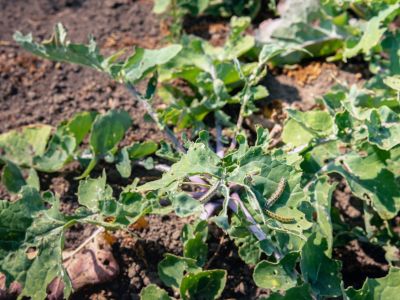Avoiding Rutabaga Plant Issues
Rutabagas (Brassica napobassica) are members of the Cruciferae, or mustard family. Rutabagas are a cool season crop, 40 to 60 degrees F. (4-16 C.) grown for their edible, thick, cream colored root and can be grown as either a spring or fall crop. Also know as Swedish turnips, rutabagas are milder and sweeter than an ordinary turnip. Like its cousin, the leaves of the rutabaga are also edible and may be grown for its greens as well. The key to growing healthy plants that are free of most rutabaga problems is to provide appropriate growing conditions and care. Plant rutabagas in late winter or early spring for a spring harvest or sow (two and a half to three months before heavy frost) in late summer for fall/winter crops. Scatter the tiny seeds and rake in or plant in a narrow line in loose soil. Thin to foster good root formation. The rutabaga plant prefers good drainage, root irrigation in drier climates, and due to its longer growing season, should be planted as early as possible. Some rutabaga cultivars to consider are:
American Purple Top– 90 days to maturity, deep purple crown, yellow below the crown, globe-shaped root 5 to 6 inches (13-15 cm.) in diameter with yellow flesh color and medium size, blue-green cut leaves. Laurentian– 90 days to maturity, purple crown, light yellow below crown, globe-shaped roots 5 to 5 1/2 inches (13-14 cm.) in diameter with yellow flesh and medium blue-green cut leaves.
Common Pests and Diseases Affecting Rutabagas
Even with all your good efforts and care, rutabaga problems may still creep up. Learning about the more common rutabaga plant issues is the first step to dealing with rutabaga pests or diseases affecting rutabagas.
Rutabaga Pests
The rutabaga is enticing to a number of insects. Among those most attracted to the plant include the following rutabaga pests:
Foliage munching caterpillars Seedling destructive cutworms Root knot nematode infested soil causes deformed root formation Turnip aphids and flea beetles ravage the greens and a chemical spray may be needed to banish these pests Again, insecticides may be required to control root maggots and wireworms
Weeds can cause problems too. Control any emergent weeds with shallow cultivation so as to not damage the bulb.
Diseases Affecting Rutabagas
Several disease problems which commonly afflict the rutabaga plant include:
Clubroot Root knot Leaf spot White rust White spot Anthracnose Alternaria
Rutabagas also suffer from the same problems as other members of the cabbage group, including downy mildew. To prevent problems with diseases, rutabagas shouldn’t be grown on the same site more than two years in a row. Consult with your local garden supply center for information on types of chemical disease management.
